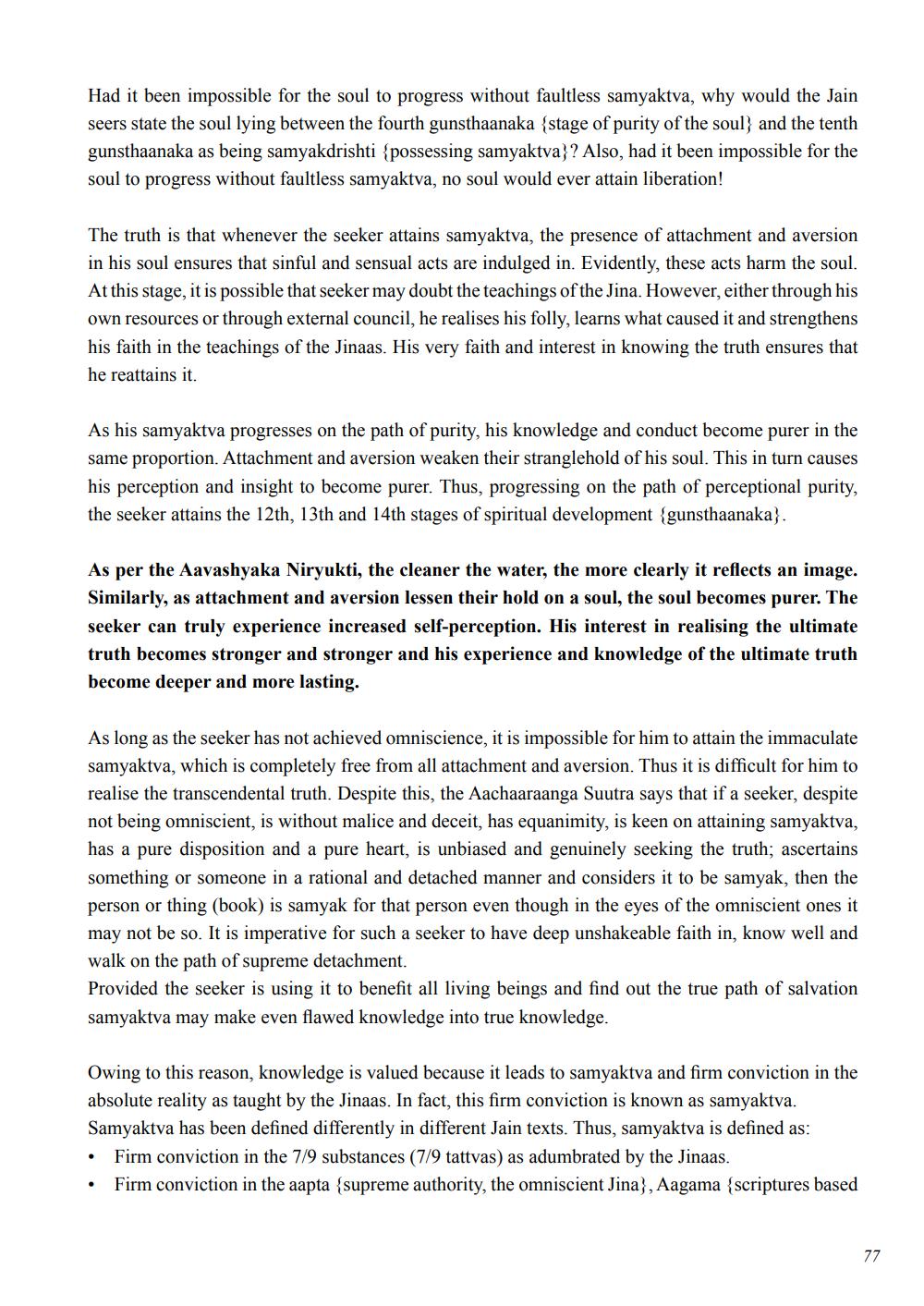________________
Had it been impossible for the soul to progress without faultless samyaktva, why would the Jain seers state the soul lying between the fourth gunsthaanaka (stage of purity of the soul) and the tenth gunsthaanaka as being samyakdrishti {possessing samyaktva? Also, had it been impossible for the soul to progress without faultless samyaktva, no soul would ever attain liberation!
The truth is that whenever the seeker attains samyaktva, the presence of attachment and aversion in his soul ensures that sinful and sensual acts are indulged in. Evidently, these acts harm the soul. At this stage, it is possible that seeker may doubt the teachings of the Jina. However, either through his own resources or through external council, he realises his folly, learns what caused it and strengthens his faith in the teachings of the Jinaas. His very faith and interest in knowing the truth ensures that he reattains it.
As his samyaktva progresses on the path of purity, his knowledge and conduct become purer in the same proportion. Attachment and aversion weaken their stranglehold of his soul. This in turn causes his perception and insight to become purer. Thus, progressing on the path of perceptional purity, the seeker attains the 12th, 13th and 14th stages of spiritual development gunsthaanaka).
As per the Aavashyaka Niryukti, the cleaner the water, the more clearly it reflects an image. Similarly, as attachment and aversion lessen their hold on a soul, the soul becomes purer. The seeker can truly experience increased self-perception. His interest in realising the ultimate truth becomes stronger and stronger and his experience and knowledge of the ultimate truth become deeper and more lasting.
As long as the seeker has not achieved omniscience, it is impossible for him to attain the immaculate samyaktva, which is completely free from all attachment and aversion. Thus it is difficult for him to realise the transcendental truth. Despite this, the Aachaaraanga Suutra says that if a seeker, despite not being omniscient, is without malice and deceit, has equanimity, is keen on attaining samyaktva, has a pure disposition and a pure heart, is unbiased and genuinely seeking the truth; ascertains something or someone in a rational and detached manner and considers it to be samyak, then the person or thing (book) is samyak for that person even though in the eyes of the omniscient ones it may not be so. It is imperative for such a seeker to have deep unshakeable faith in, know well and walk on the path of supreme detachment. Provided the seeker is using it to benefit all living beings and find out the true path of salvation samyaktva may make even flawed knowledge into true knowledge.
Owing to this reason, knowledge is valued because it leads to samyaktva and firm conviction in the absolute reality as taught by the Jinaas. In fact, this firm conviction is known as samyaktva. Samyaktva has been defined differently in different Jain texts. Thus, samyaktva is defined as: • Firm conviction in the 7/9 substances (7/9 tattvas) as adumbrated by the Jinaas. • Firm conviction in the aapta {supreme authority, the omniscient Jina), Aagama {scriptures based




